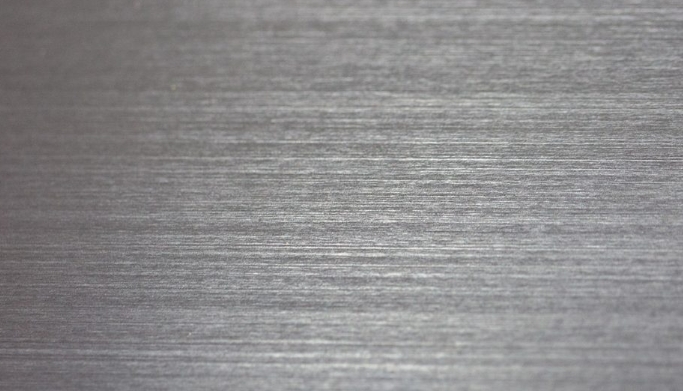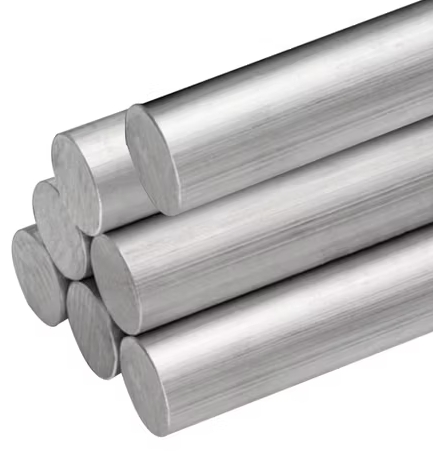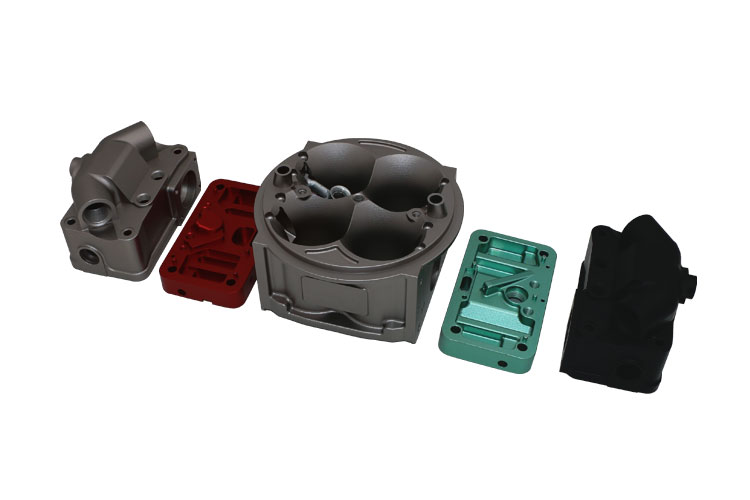Does Billet Aluminum Have a Grain?
Are you curious whether billet aluminum has a grain? This question is critical for industries relying on materials with precision, durability, and aesthetic quality. Understanding the microstructure of billet aluminum helps clarify its performance advantages in applications requiring reliability.
Yes, billet aluminum has a grain. But billet aluminum does not have a grain in the traditional sense, like wood or forged metals. Its microstructure, influenced by its casting and machining processes, offers uniform properties across all directions, making it ideal for precision components and high-performance applications.
Let’s dive deeper into the grain structure of billet aluminum and understand why it’s preferred across various industries.
What Is Grain?
Grain in metals pertains to the configuration of small crystalline structures that develop during the solidification process. These grains are delineated by grain boundaries, which play a crucial role in determining the material’s strength, ductility, and overall performance characteristics.
Metals with distinct grain structures, such as forged aluminum, have directional properties that make them suitable for specific load-bearing tasks. In contrast, billet aluminum, with its isotropic microstructure, exhibits uniform strength and machinability, regardless of orientation.
Understanding Grain Structure in Metals
Grain structure significantly impacts the properties of metals. Below is a table that outlines how grain characteristics influence material behavior and how billet material differs due to its manufacturing process.
| Grain Characteristic | Impact on Metals | Billet Material Characteristics |
|---|---|---|
| Grain Size | – Larger grains reduce strength but improve toughness. – Smaller grains enhance strength and fatigue resistance. |
Uniform microstructure minimizes grain size variability, ensuring consistent strength. |
| Ductility | Fine grains increase ductility, making the metal more adaptable to deformation. | Isotropic structure allows balanced ductility in all directions. |
| Machinability | Consistent grain size and orientation simplify cutting and shaping processes. | Lack of directional grains enhances machinability for precise CNC machining. |
| Directional Properties | Grains aligned in specific directions improve performance in those orientations. | Billet material exhibits uniform properties, eliminating directional dependencies. |
| Applications | Grain size and orientation are tailored for specific tasks (e.g., forging, casting). | Suitable for applications requiring precision and consistent material behavior. |
Why Is Grain So Important?
Grain refers to the natural alignment and structure of fibers or crystals in materials like wood, metal, or textiles. Understanding grain is crucial because it directly affects the material’s strength, flexibility, appearance, and workability.
1. Strength and Durability: In wood, working with the grain ensures structural integrity, while going against it can weaken the piece. In metals, grain boundaries affect hardness and fatigue resistance.
2. Aesthetic Appeal: The grain pattern in wood adds visual character, enhancing its beauty for furniture or flooring.
3. Workability: Cutting or shaping along the grain requires less effort and prevents damage, such as splintering in wood or cracking in metals.
What is a Billet Metal?
A billet metal refers to a solid, rectangular or cylindrical form of metal that has been extruded, cast, or rolled into a specific shape, typically for further processing. It is used as the starting material for manufacturing various metal parts and products, particularly in machining processes.
Billet is typically made from metals like aluminum, steel, copper, or brass. In CNC machining, a billet is often machined into parts by removing material from the block.
Billet metal is known for its uniform grain structure, which makes it ideal for parts that require high strength, precision, and durability. It is more robust compared to cast metals because the grain structure is less likely to have flaws.
What Is Billet Aluminum?
Billet aluminum refers to a solid block of aluminum that undergoes a specific casting and machining process to create high-quality, uniform parts. Unlike extruded or cast aluminum, billet aluminum is prized for its superior structural integrity and isotropic properties.
Its use spans industries that demand consistency, such as aerospace and automotive manufacturing. Billet material ensures components retain high strength and accuracy, even under extreme conditions. (If you want to learn more about Billet Aluminum, you can click on this blog to read: Billet vs Cast vs Forged Manufacturing: Differences and Selections)
Key Characteristics of Billet Aluminum:
Uniform Microstructure: This feature guarantees consistent performance across various directions, enhancing reliability.
Aesthetic Finish: Billet aluminum boasts smooth surfaces that lack visible grain patterns, providing a visually appealing appearance.
Versatility: It is suitable for a wide range of applications, both functional and decorative, making it an adaptable choice for different projects.
How Is Billet Aluminum Made?
The production of billet aluminum involves several key steps:
Melting: The initial step involves melting pure aluminum or aluminum alloys in specialized furnaces to prepare for casting.
Casting: Following the melting phase, the molten aluminum is carefully poured into molds, resulting in the formation of solid billets.
Cutting: Once the billets solidify, they are cut to predetermined lengths or shapes to facilitate subsequent machining operations.
Precision Machining: The final stage involves CNC machining of the billets, which allows for the attainment of tight tolerances and the desired surface finishes.
This comprehensive process effectively removes impurities and ensures a consistent microstructure, establishing billet of aluminum as a preferred material for industries that demand precise specifications.
Does Billet Aluminum Have a Grain?
Yes, billet aluminum has a grain. But aluminum does not have a traditional grain structure like steel or forged metals. Instead, its microstructure is isotropic, meaning it exhibits uniform properties in all directions.
This uniformity arises from the controlled cooling and machining processes during production. Unlike forged aluminum, which has visible grain patterns that dictate its strength, billet material ensures consistent performance regardless of orientation.
What is Stronger Billet or Forged Aluminum?
Forged aluminum is typically stronger than billet aluminum, especially for high-performance applications. However, their strengths are derived from different manufacturing processes.
Billet aluminum is machined from a solid block of aluminum, which results in a part with a consistent grain structure. While it has good strength, it may be slightly less strong than forged aluminum due to the machining process, which can cause stress concentrations in the material.
Forged aluminum is made by applying high pressure to aluminum, which aligns the grain structure and compresses the metal, resulting in a denser, stronger material. Forged aluminum generally offers better strength and durability compared to billet, especially for parts that will undergo high stress or need to withstand extreme conditions.
How Does the Lack of Grain Affect Its Performance?
The absence of a directional grain structure in billet aluminum results in several performance benefits:
1. Uniform Strength
Without directional grains, billet aluminum exhibits consistent strength across all directions, making it suitable for load-bearing applications.
2. Superior Machinability
Isotropic properties allow for precise machining without encountering hard or soft spots, reducing tool wear and ensuring smooth surfaces.
3. Enhanced Aesthetics
The lack of visible grains allows for high-quality finishes, making it ideal for products requiring both functionality and aesthetic appeal.
4. Reliability Under Stress
Grain-free structure minimizes weak points, ensuring durability and reliability under mechanical stress and thermal conditions.
These attributes make billet aluminum a preferred material in industries such as aerospace, automotive, and electronics, where consistency and performance are critical.
The Importance of Grain Structure in Billet Aluminum
The grain structure, or the uniformity of the microstructure, in billet aluminum plays a crucial role in various performance aspects:
Strength: A consistent microstructure ensures uniform strength across all dimensions, setting it apart from materials that exhibit directional grain patterns.
Precision: The isotropic nature of the grain structure significantly enhances the material’s suitability for CNC machining, facilitating the achievement of tight tolerances.
Surface Finish: The lack of visible grains contributes to a smoother, polished surface finish, making it ideal for applications that require high-end aesthetics.
These characteristics establish billet aluminum as a preferred choice for industries that demand both consistency and precision in their materials.
How the Manufacturing Process Impacts Billet Aluminum’s Structure?
The manufacturing process of billet aluminum directly shapes its microstructure, ensuring uniformity and isotropic properties. Key steps in the process and their impact include:
| Process Step | Impact on Structure |
|---|---|
| Melting and Alloying | Ensures homogeneity by combining aluminum with alloying elements, eliminating impurities. |
| Casting | Controlled cooling creates a consistent microstructure with minimal defects. |
| Heat Treatment | Refines the material’s properties, such as strength and ductility, by controlling the grain formation. |
| Precision Machining | Produces exact shapes and tolerances without introducing directional grain patterns. |
Comparison with Other Aluminum Forms
The following table demonstrates the distinct advantages of billet aluminum over cast and extruded forms.
| Feature | Billet Aluminum | Cast Aluminum | Extruded Aluminum |
|---|---|---|---|
| Structure | Uniform, isotropic microstructure | Heterogeneous, with potential weak spots | Directional grains, aligned along extrusion |
| Strength | High, consistent across all directions | Lower, with localized variability | Moderate, directional strength |
| Machinability | Excellent, ideal for precision machining | Limited, prone to defects during machining | Good, but limited to certain orientations |
| Surface Finish | Smooth, polished surfaces | Often rough, requiring secondary finishing | Dependent on grain orientation |
| Applications | Aerospace, automotive, medical equipment | Low-cost components, non-structural parts | Pipes, frames, and structural profiles |
Applications of Billet Aluminum Across Various Industries
Billet aluminum is recognized for its versatility and reliability, leading to extensive applications across different sectors:
Automotive: In the automotive industry, components like engine blocks and suspension parts greatly benefit from the material’s inherent strength and durability.
Aerospace: Lightweight yet robust, billet aluminum is favored for structural components and precision parts, contributing to overall performance and safety.
Electronics: The effective heat dissipation properties of billet aluminum render it ideal for use in enclosures and heat sinks, enhancing functionality and performance in electronic devices.
Medical Devices: Its corrosion resistance and biocompatibility make billet aluminum an appropriate choice for surgical tools, ensuring safety and efficacy in medical applications.
In Conclusion
While billet aluminum lacks a traditional grain structure, its isotropic microstructure ensures consistent performance, making it an indispensable material in industries requiring precision, reliability, and durability.
Start Your CNC Machining Project
We are committed to providing you with comprehensive and efficient one-stop machining services, covering CNC machining, sheet metal processing, 3D printing and a variety of surface treatment services. With 100 imported high-end equipment, we have strong production capacity and superb technical level. We can deliver samples to you in just 3 days; and we can complete the production of small batches of products in 7 days. Contact us now for a free quote!
Frequently Asked Questions About Billet Aluminum
Is Billet Aluminum Stronger than Steel?
Billet aluminum is generally not stronger than steel. While aluminum is lightweight and corrosion-resistant, steel typically has a higher tensile strength, making it stronger and more durable in high-stress applications. However, billet aluminum is often used in precision parts due to its ability to be machined into complex shapes with great accuracy, and it can still offer a strength-to-weight advantage in certain uses.
What is a Grain Boundary?
A grain boundary is the interface between two or more crystals (grains) in a material. It plays a crucial role in determining the material’s properties, such as strength, ductility, and corrosion resistance. The orientation of the grains and the structure of the boundaries can significantly affect how the material behaves under stress or heat treatment.
What is the Composition of Aluminum Billet?
The composition of aluminum billet primarily consists of aluminum alloy with varying amounts of elements like copper, manganese, silicon, magnesium, and zinc. The specific alloy depends on the intended use. Common alloys include 6061, which contains magnesium and silicon for improved strength and corrosion resistance, and 7075, which contains zinc for higher strength but lower workability.






